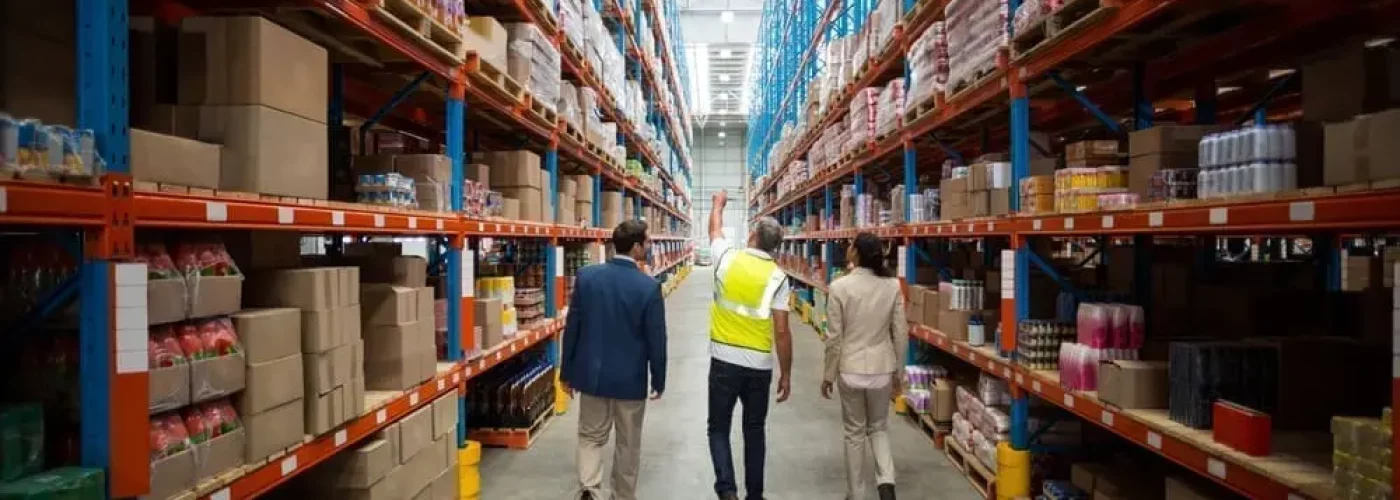With the warehouse being a risk-inherent environment, it is a warehouse manager’s primary role to ensure that their operation does not cause injury to any of the staff working there. They must also take care to provide protection for those visiting the warehouse, whether this means drivers, temporary staff or maintenance personnel.
There are some practical tips that we can provide to assist with making the warehouse environment safer. From leveraging technology to getting the basics right, you can ensure that your warehouse is a safe place for visitors, and staff alike.
Cleaning and organisation
The first step in ensuring a warehouse is safe for those using it is to clear away any cluttered aisles that could pose a slip trip or fall risk. Regular inspection should be undertaken to ensure that there are no slip hazards and that debris has not made its way into pathways. Also, take a look at whether there is any damaged flooring, and signpost this accordingly. In addition to walkways, ensure your stocking processes are safe and within their height limits. It is vital to keep shelves manageable, prevent overloading and make sure that the heaviest items are stored low to prevent damage when falling.
In addition, clearly signposted walkways should be used to ensure that bottlenecks are not created, wherever possible.
Leverage technology
There are many innovative systems that allow a warehouse to operate more safely. Automated dock levellers, and other loading bay solutions such as blindspot alarms and early warning systems can ensure that employee safety is prioritised at all times.
Equipment safety
As per health and safety law, all your staff should be trained to use their equipment safely. In addition, anyone undertaking manual handling activities must receive specific training in how to lift safely. Assuming this is done, it is also vital to take a look at how safe the equipment in your warehouse is. Regular inspections, encouraging staff reporting protocols for faults and keeping records of any maintenance activities will help you keep track of what needs to be repaired or replaced and when.
Store equipment carefully and out of the way, wherever possible. Establish an end-of-day procedure for how equipment should be left at the end of the working day.
Fire safety
It can be difficult to ensure that all fire exits are left clear in a busy warehouse environment, but this must be done. All signs pointing to emergency exits should be removed, and regular fire drills should be undertaken to ensure staff know what to do in an emergency.
Ensure your extinguishers and fire alarms are tested and maintained properly. You should also provide training to your staff on how to use these. If you still have flammable materials, you should have protocols in place to ensure their safety and provide PPE to staff where appropriate if they are handling, chemicals such as these.
Create a culture that thrives on safety
In a busy warehouse environment, people can often just get on with a job without highlighting any small problems. This is not a culture for the safest of warehouses. Employees should always be encouraged to report any safety issues, and there should be no problem with them doing so. Involve your employees in creating safety procedures, and they are much more likely to adhere to them. It may even be an idea to provide recognition and rewards for those who come up with innovative safety ideas.
Hopefully, these practical tips on how to make your warehouse safer will give you some idea of how to ensure your warehouse operates productively and safely, no matter how busy it is.





